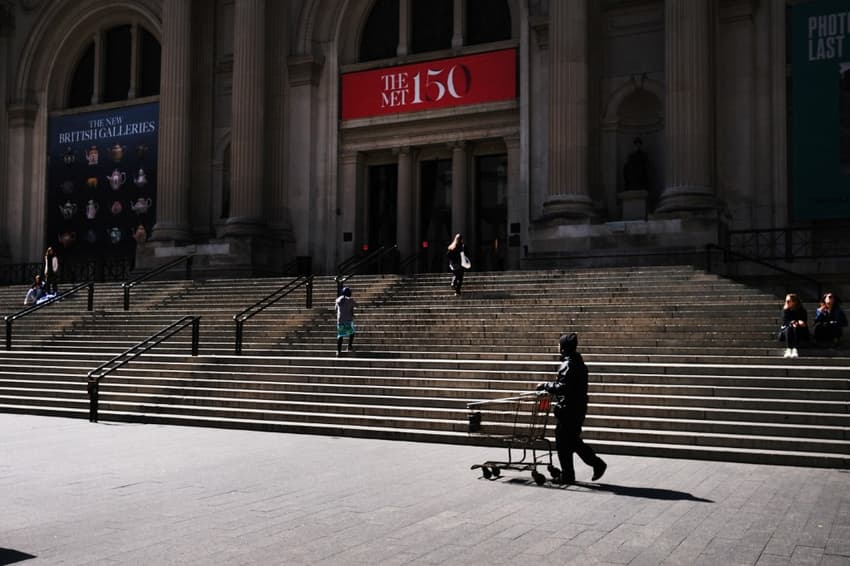New York returns 214 stolen artworks to Italy in seven months

Authorities in New York announced on Thursday the return to Italy of 14 more antiquities, worth an estimated €2.3 million, as part of an investigation into smuggling of stolen artifacts.
The Manhattan District Attorney's office has been conducting an extensive investigation over the past two years into looted antiquities that have ended up in New York museums and galleries -- including the prestigious Metropolitan Museum of Art.
During a ceremony on Thursday with the Italian consul general and Italian police representatives, 14 more artifacts - some 2,600 years old - were officially returned to Italy, bringing the total number of repatriated pieces to that country over the past seven months to 214, District Attorney Alvin Bragg's office said.
READ ALSO: Italian ‘art squad’ police recover 800 illegally-excavated archaeological finds
More than 700 pieces worth more than $100 million have been returned in the past year to 17 countries, including Italy as well as Cambodia, India, Pakistan, Egypt, Iraq, and Greece, the statement added.
New York, a hub of stolen antiquities trafficking for decades, set up a task force in 2017 to investigate the illicit trade.
According to the statement by District Attorney Bragg, who took office in January 2022, Thursday's repatriation included the silver "Sicily Naxos Coin," minted around 430 BCE and currently valued at half a million dollars.
Other notable items included ancient pottery dating to 510 BCE, and amarble head of Roman Emperor Hadrian, dating to 200 CE.
Among the culprits behind the 14 returned pieces, the statement said, were well-known art traffickers Giacomo Medici and Giovanni Franco Becchina, as well as Robert Hecht, the Paris-based American art dealer who died in 2012.
The traffickers had "relied on gangs of tombaroli (tomb raiders) to loot carefully chosen and insufficiently guarded archaeological sites throughout the Mediterranean," it added.
Comments
See Also
The Manhattan District Attorney's office has been conducting an extensive investigation over the past two years into looted antiquities that have ended up in New York museums and galleries -- including the prestigious Metropolitan Museum of Art.
During a ceremony on Thursday with the Italian consul general and Italian police representatives, 14 more artifacts - some 2,600 years old - were officially returned to Italy, bringing the total number of repatriated pieces to that country over the past seven months to 214, District Attorney Alvin Bragg's office said.
READ ALSO: Italian ‘art squad’ police recover 800 illegally-excavated archaeological finds
More than 700 pieces worth more than $100 million have been returned in the past year to 17 countries, including Italy as well as Cambodia, India, Pakistan, Egypt, Iraq, and Greece, the statement added.
New York, a hub of stolen antiquities trafficking for decades, set up a task force in 2017 to investigate the illicit trade.
According to the statement by District Attorney Bragg, who took office in January 2022, Thursday's repatriation included the silver "Sicily Naxos Coin," minted around 430 BCE and currently valued at half a million dollars.
Other notable items included ancient pottery dating to 510 BCE, and amarble head of Roman Emperor Hadrian, dating to 200 CE.
Among the culprits behind the 14 returned pieces, the statement said, were well-known art traffickers Giacomo Medici and Giovanni Franco Becchina, as well as Robert Hecht, the Paris-based American art dealer who died in 2012.
The traffickers had "relied on gangs of tombaroli (tomb raiders) to loot carefully chosen and insufficiently guarded archaeological sites throughout the Mediterranean," it added.
Join the conversation in our comments section below. Share your own views and experience and if you have a question or suggestion for our journalists then email us at [email protected].
Please keep comments civil, constructive and on topic – and make sure to read our terms of use before getting involved.
Please log in here to leave a comment.